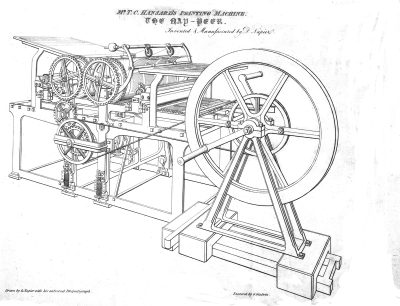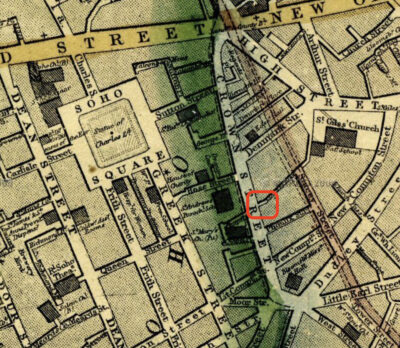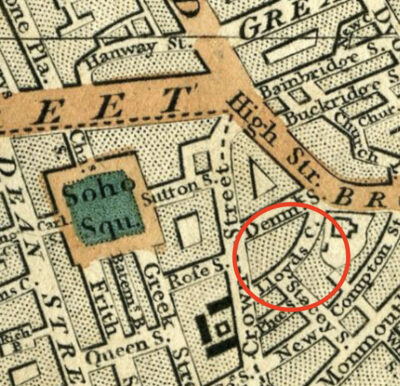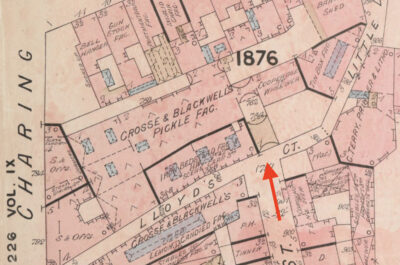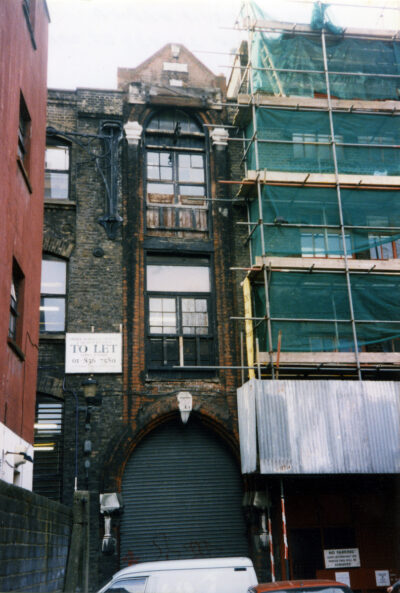Soho
Upon his arrival in London around 1808 at the age of 23 David initially found employment working for Henry Maudslay and learning his trade. Maudslay is considered the father of machine tool technology inventing a lathe that could cut metal and paving the way for creating standard screw sizes. He also trained and encouraged many other engineering greats including Whitworth, Nasmyth and of course David Napier.
By 1815 David had left Maudslay’s company and was occupied as a work’s foreman close to Fleet Street, undoubted gaining experience of the printing industry and machines in the area. By 1817 he became the engineering partner in Messrs Baisler & Napier, Engineers repairing and later building printing machines. Their business was located at Lloyds Court in Soho, an area which contained several other engineering businesses including Maudslay’s before he moved over the river to Westminster Bridge Road in 1810. Baisler, a fellow Scot, broke the partnership after just five years in 1822. He left and set up as a stationer & bookseller on Oxford Street before being declared bankrupt in 1847. Meanwhile David continued running his business from larger premises again in Lloyds Court. David’s business remained small but highly profitable as he specialised almost exclusively in building over 340 printing machines of “Nay-peer”, “Desidertum”, “Double Imperial” and “Platen” designs.
Tracking down the location of the Lloyds Court premises has taken the Trust quite some effort! A Napier advertisement of the time shows the address as being at 15 Lloyds Court, Crown Street, Soho. It appears that an 1877 Act of Parliament saw Crown Street become the northern part of Charing Cross Road. After searching through increasingly old maps, Lloyds Court was finally tracked down as a narrow lane connecting Crown Street (now Charing Cross Road) and St Giles-in-the- Fields Church. This also changed its identity in the late 1870’s, now being named Flitcroft Street after Henry Flitcroft, the architect of the church.
The entrance that Geof McGarry photographed opened into a small yard serving an Iron Bedstead Company, a cooperage and the largest company n the area, Cross and Blackwell. This part of the C&B empire was used for the production of pickles!
Today Flitcroft Street is little more than a narrow passageway where you could barely fit a car. The building numbering starts at the St. Giles church end so David’s works at No.15 was close to the Charing Cross Road end. Unfortunately for us the Phoenix Theatre was built on the south side of the street in the 1930’s probably eating into the width of the street at this point. Wikipedia states that the theatre was built on the site of a former factory and a music hall so the Napier Works is probably beneath the theatre. Equally it could be the kitchens of the Chipotle Mexican Grill on the opposite side! Either way today it is possible to still walk in the footsteps of David from his engineering works to his various homes on Soho Square and Carlisle Street.

